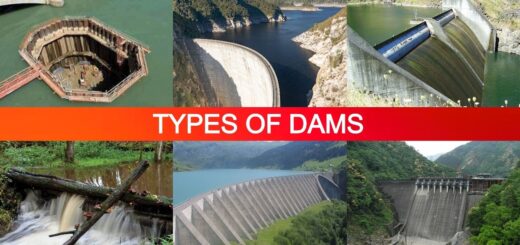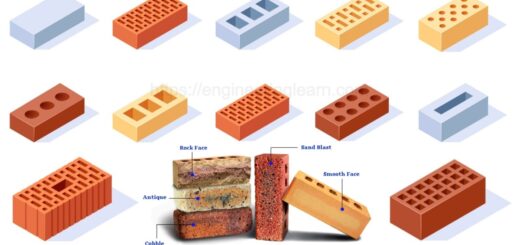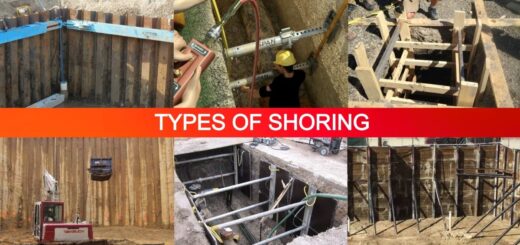What is Surveying? Types of Surveying, Uses, Objectives & Principles [Explained with Details]
![What is Surveying? Types of Surveying, Uses, Objectives & Principles [Explained with Details]](https://engineeringlearn.com/wp-content/uploads/2023/03/Surveying-1024x539.jpg)
Surveying Introduction:
What is Surveying? Types of Surveying, Uses, Objectives & Principles [Explained with Details]: – Surveying is the science and art of making all fundamental measurements to determine the overall position of points or physical and social details above, on, or underneath the outer layer of the earth, and depict them in a usable structure, or to establish the position of points or details.
Surveying is basically conducted for measuring the linear parameters as well as the angular parameters for the foundation of points through which the plans and maps can be prepared.
A portion of the important equipment utilized in surveying includes theodolite, compass, auto-level, chains, tapes, evening out staff, complete station, etc. Surveying is the most significant when all the structural designing works, for example, planning and developing streets, structures, spans, water systems, water supply frameworks, and so on.
It basically provides the basic structure for the conception, design, and execution of the construction works. The process of surveying incorporates both fieldwork and office work. This is on the grounds that the measurements are taken in the field and the significant numerical computations for the determination of the distances, angles, directions, elevations, areas, regions, and volumes are done at the workplace.
Uses of Surveying:
A portion of the significant uses of surveying can be listed as follows:
- It is essential in the preparation of geological maps indicating the backwoods, slopes, and other geographical features of an area.
- It is necessary for the preparation of cadastral maps for dividing the boundaries and property lines.
- It is additionally essential for public safety planning, military reason, military key planning, and so on.
- Mine surveying is indispensable for the identification and exploration of mines and assets.
- It is likewise necessary for the planning and fixing of navigation routes.
Objectives of Surveying:
- To determine the overall position of different points above, on, or underneath the outer layer of the earth.
- To take the linear estimations and angular measurements between different points.
- To set up the plans and maps for example for the representation of a measured plot of the region on a horizontal plane.
Types of Surveying
1. Plane Surveying: ( Types of Surveying )
Plane surveying is a process of surveying in which the part of the earth being surveyed is considered as a plane. The term is utilized to assign survey work in which the distances or regions involved are small enough that the curve of the earth can be disregarded without significant error. By and large, the term is of limited extent. For small areas, precise outcomes might be acquired with plane surveying strategies, yet the exactness and accuracy of such outcomes will diminish as the area surveyed increases in size. To make calculations in plane surveying, you will utilize formulas of plane trigonometry, polynomial math, and scientific calculation.
An incredible number of surveys are of the plane surveying type. Surveys for the location and construction of highways and streets, channels, landing fields, and railways are classified under plane surveying.
2. Plane Table Surveying: ( Types of Surveying )
The observations, perceptions, and plotting are done simultaneously. An art paper or sheet is fixed on a calibrated plane table. The field observations are taken and recorded next to each other on the paper and in the end, the map is prepared.
3. Traverse Surveying: ( Types of Surveying )
The plot of the plan is enclosed or encased by a progression of straight lines making angles with each other. The length of the lines and angles are measured and plotted with details on drawing paper to a reasonable scale to produce the map.
4. Geodetic Surveying: ( Types of Surveying )
It is a process of surveying in which the shape and size of the earth are thought of or considered. This sort of survey is appropriate for large areas and long lines and is utilized to find the exact location of basic points required for establishing control for other surveys. In geodetic surveys, the stations are normally significant distances apart, and more precise instruments and surveying strategies are required for this sort of surveying than for plane surveying.
Subsequently, in the calculation of distances in geodetic surveys, allowances are made for the earth’s minor and major diameters from which a spheroid of reference is created. The position of each geodetic station is connected with this spheroid. The positions are communicated as latitudes and longitudes or as northings and castings on a rectangular lattice.
5. Ordinary Leveling: ( Types of Surveying )
The elevations of various points on the earth’s surface are determined. Gives all the elevation data needed for construction activities.
6. Reciprocal Leveling: ( Types of Surveying )
Reciprocal leveling is utilized in leveling across streams, gullies, and different impediments to eliminate instrumental errors. Level readings are taken from two setups at two distinct points. The contrast in levels between two sites with obstructions is determined through this survey.
7. Tacheometry or Stadia Surveying: ( Types of Surveying )
A telescopic is utilized to measure distances. It consolidates a theodolite constrained by an administrator and a level staff held by one more assessor a ways off. Both vertical and horizontal distances are computed through stadia (the two flat markings on a theodolite) readings
8. Astronomical Surveying: ( Types of Surveying )
The meridian, azimuth, scope, longitude, and so on of the plot are not entirely surveyed with the assistance of celestial bodies.
9. Triangulation: ( Types of Surveying )
A network of distinct triangles is formed on the plot of land to be surveyed. One of the lines is considered as the pattern or baseline, any remaining lines and angles are then measured accordingly.
10. Topographic Surveying: ( Types of Surveying )
The purpose of Topographic surveying is to collect survey data about the natural and man-made highlights or features of the land, as well as its elevations. From this information, a three-layered map may be prepared. You may prepare the topographic map in the workplace in the wake of gathering the field data or set it up immediately in the field via plane table. The work usually comprises the following:-
- Establishing horizontal and vertical control that will act as the framework and structure of the survey.
- Deciding sufficient horizontal location and elevation (generally called side shots) of ground points give an adequate number of information for plotting when the map is prepared.
- Locating natural and man-made highlights that might be required by the purpose of the survey.
11. Route Surveying: ( Types of Surveying )
The term route surveying alludes to surveys necessary for the location and construction of lines of transportation or communication that go on across the country for some distance, like parkways, highways, railways, open-conductor frameworks, pipelines, and electrical cables. By and large, the fundamental survey for this work appears as a topographic survey. In the final stage, the work may comprise of the following: –
- Determining elevations along and across the center line for plotting profile and cross segments.
- Plotting the profile and cross areas and fixing the grades.
- Processing or computing the volumes of earthwork and setting up a mass diagram.
- Marking out the limits for cuts and fills
12. Photographic Surveying: ( Types of Surveying )
Maps are prepared from photos taken from a suitable camera station; the stations can be even airplanes.The output is a map, a drawing or a 3D model of some real-world scene or object.
13. Special Surveying: ( Types of Surveying )
Special surveying is conducted for a specific purpose and with a special type of surveying equipment and methods. A concise discussion of a portion of the special surveys is mentioned below:-
(i) Land Surveys
Land surveys are conducted to lay out the specific location, boundaries, or region of a tract of land in any predetermined region. This sort of survey requires proficient enrollment in all states. As of now, land surveys for the most part comprises of the following chores:-
- Establishing markers or landmarks to characterize and thereby safeguard the boundaries of land belonging to a private or confidential concern, an enterprise, or a public authority.
- Migrating markers or landmarks legally established by unique surveys. This requires analyzing previous survey records and it was finished to backtrack what was done. At the point when a few markers or landmarks are missing, they are restored following recognized procedures, it is accessible to utilize whatever information is available.
- Rerunning old land survey lines to decide their lengths and directions. Because of the significant expense of land, old lines are remeasured to get more exact measurements.
- Subdividing landed estates into parcels or bundles of foreordained sizes and shapes.
- Computing regions, distances, and directions and setting up the land map to depict the survey data so that it can very well be utilized as a permanent durable record.
(ii) Hydrographic Surveying
Hydrographic surveying is made to procure information required to chart and additionally map shorelines and bottom depths of rivers, streams, lakes, repositories, and other larger waterways. This sort of survey is additionally of general significance to navigation and the development of water resources for flood control, irrigation, electrical power, and water supply.
As in other special surveys, a few distinct types of electronic and radio-acoustical instruments are utilized in hydrographic surveys. These special gadgets or devices are generally utilized in deciding water depths and the location of objects on the base by a technique called sounding. Soundings are taken by estimating the time required for sound to travel downward and be reflected back to a receiver on board a vessel.
(iii) Control Surveying
Control surveying provides “essential control” or horizontal and vertical position of points to which supplementary surveys are adjusted or changed. These sorts of surveys (in some cases named and traverse stations and the elevation of benchmarks. These control points are additionally utilized as references for hydrographic surveys of the coastal waters; for geological control; and for the control of many states, city, and confidential surveys.
Horizontal and vertical controls generated via land (geodetic) surveys provide coordinated position information to all assessors. It is in this manner vital that these kinds of reviews utilize first-request and second-request correctnesses.
Principles of Surveying
As a rule, surveying depends on various standards (or rules) which can be listed as follows:
- Working from Whole to Part
- Location of Point by Measurement from Two Points of Reference
- Consistency of Work
- Independent Check
- Accuracy Required
1. Working from Whole to Part
Working from whole part suggests that when an area is to be surveyed, as an matter of some significance, a system of control points is laid out to such an extent that it covers the whole area with a higher degree of accuracy. After this, the minor control points and subtleties are additionally established with a lesser degree of precision. The fundamental thought of this principle is to forestall the unnecessary accumulation of errors and subsequently control and limit the minor errors
2. Location of Point by Measurement from Two Points of Reference
Based on this principle, the relative position of the desired points to be surveyed should be located by taking the measurement from no less than two (ideally three) perspectives, with the end goal that the place of the reference points has proactively been fixed previously.
3. Consistency of Work
Another significant guideline of surveying or looking over is the consistency of work. It should be noticed that keeping consistency in the method, instrument, perusing and taking note of perceptions, and so forth assists with acquiring the ideal degree of accuracy.
4. Independent Check
As per this guideline, every measurement that is taken in the field should be re-checked by adopting a suitable technique for independent field tests and observations so that any mix-up on the off chance that present isn’t passed without notice.
5. Accuracy Required
As indicated by this principle of surveying; the proper technique and instrument should be utilized for the survey work based on the level of accuracy required.
Conclusion
Surveying is the science and craft of making all fundamental estimations to decide the relative positions of points or physical and social details above, on, or underneath the outer layer of the Earth, and to depict them in a usable structure or form, or to lay out the position of points or subtleties. Proficient surveyors, as well as civil engineers, are paid well and just need a four year certification to begin their professions. Students with more education, for example, a master’s degree in civil engineering can procure considerably more by joining high-tech fields like renewable energy.
Content Source: – dreamcivil, brainkart, civiltoday
Image Source: – redhawksurveying













